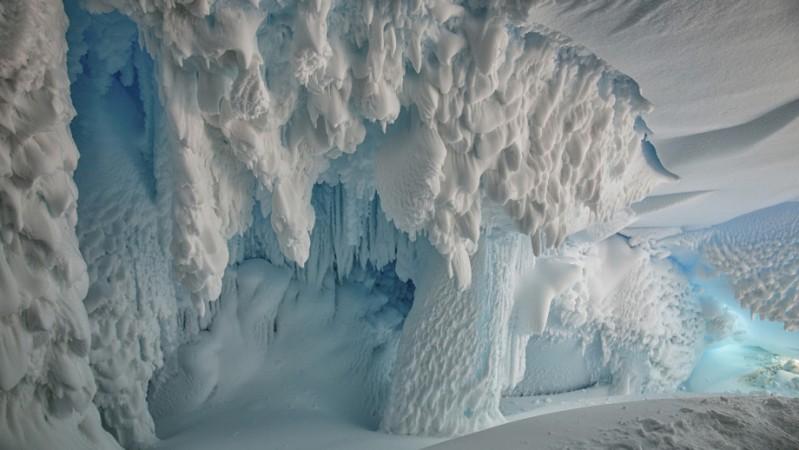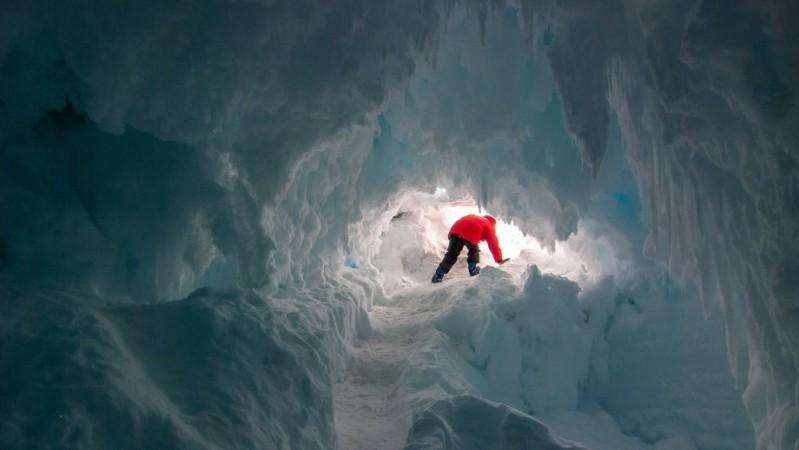Ever wondered who may live in warm caves under Antarctica's ice? A new study led by a team of Australian researchers has found that secret species of animals and plants may own that environment, which can indeed be very cosy.
Researchers said that Mount Erebus, an active volcano on Ross Island in Antarctica, is surrounded by cave systems that are hollowed out by steam. Forensic analysis of soil samples collected from these caves has unearthed some exciting traces of DNA from algae, mosses and small animals.
According to lead researcher Dr Ceridwen Fraser, from the Australian National University (ANU) in Canberra, most of the DNA retrieved from these caves was similar to DNA from plants and animals found elsewhere in Antarctica. However, some sequences couldn't be fully identified.

"The results from this study give us a tantalising glimpse of what might live beneath the ice in Antarctica - there might even be new species of animals and plants," Fraser said in a statement.
Despite being trapped under Antarctic glaciers, these caves can be an ideal place for species to thrive with just the right amount of temperature for a comfortable environment, researchers said.
"It can be really warm inside the caves - up to 25 degrees Celsius in some caves. You could wear a t-shirt in there and be pretty comfortable. There's light near the cave mouths, and light filters deeper into some caves where the overlying ice is thin," Fraser said.
The newly-found DNA traces, however, don't necessarily prove that unknown species of plants and animals are still living in the caves. Therefore, it requires for researchers to take a closer look at the caves.

If living organisms indeed exist there, "it opens the door to an exciting new world," Prof Laurie Connell, a co-researcher from the University of Maine, said.
Scientists don' know how many cave systems exist around Antarctica's volcanoes. However, abundance of many other volcanoes in the region leads researchers to believe that subglacial cave systems could be common across the icy continent.
"We found evidence of numerous eukaryotic groups, including mosses, algae, arthropods, oligochaetes and nematodes, at both exposed and subglacial sites. Our findings support the notion that geothermal areas—including subglacial environments—can nurture biodiversity in glaciated regions" researchers said in a study, published in the journal Polar Biology.

















